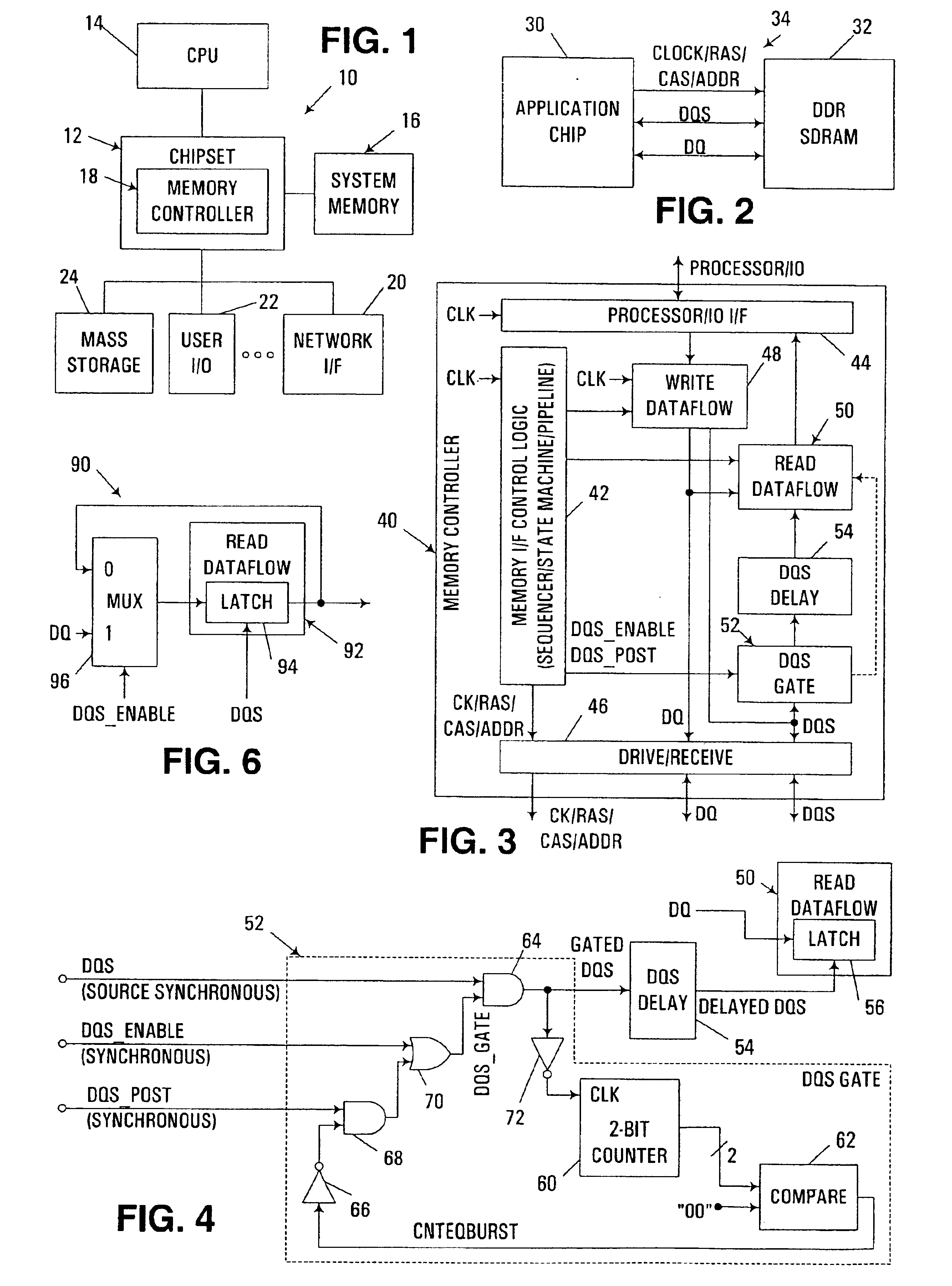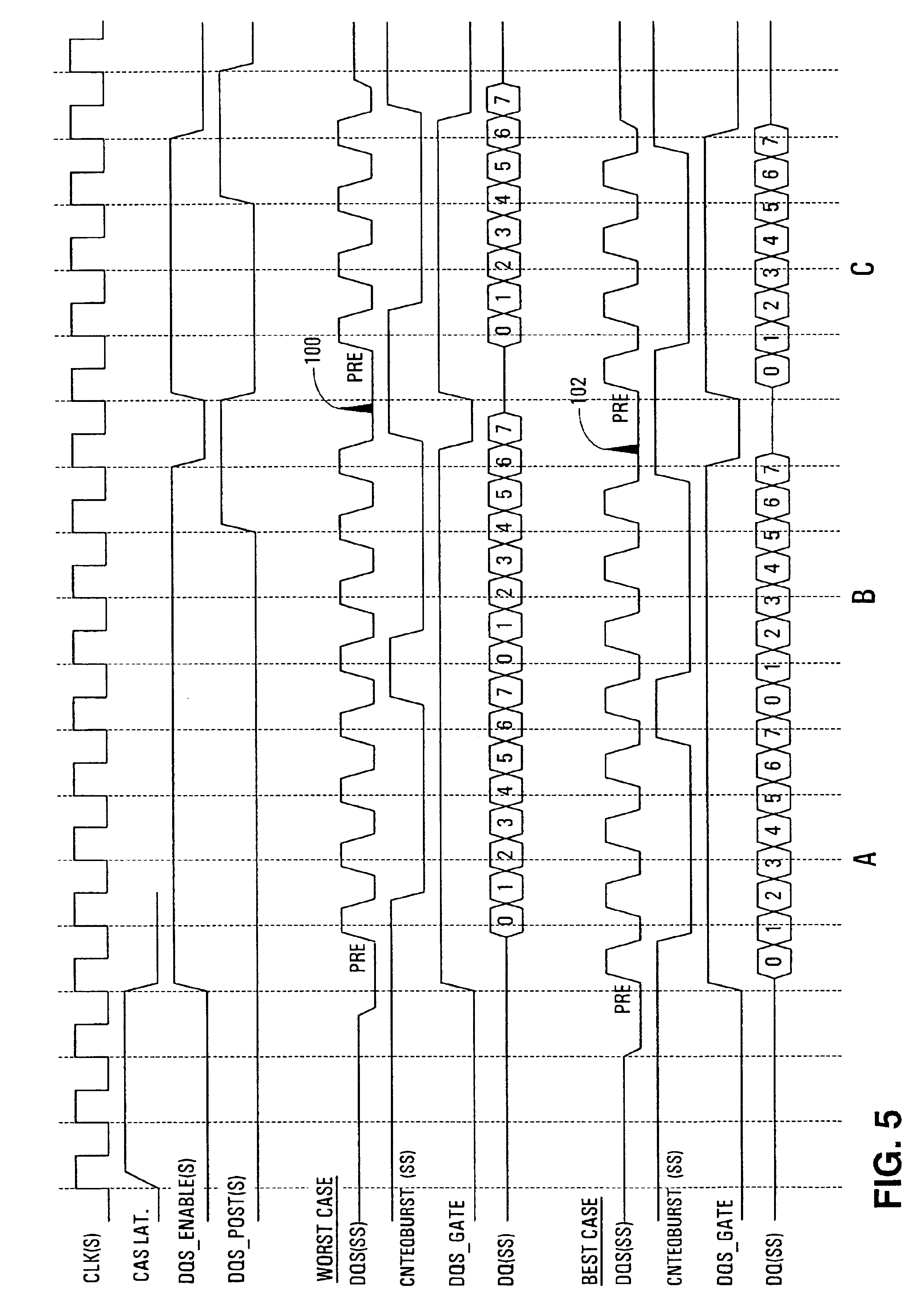Data strobe gating for source synchronous communications interface
a synchronous communication interface and data strobe technology, applied in static storage, digital storage, instruments, etc., can solve the problems of significant data integrity and reliability concerns, memory access performance becomes a significant bottleneck on overall system performance, and it is difficult to manage the control of a data strobe line, so as to minimize the risk of driver damage
- Summary
- Abstract
- Description
- Claims
- Application Information
AI Technical Summary
Benefits of technology
Problems solved by technology
Method used
Image
Examples
Embodiment Construction
[0023]The embodiments discussed herein minimize the adverse effects of glitches or other indeterminate states on a data strobe signal in a source synchronous communications interface by gating a data latch on a target device to disable latching whenever a data source is not driving the data strobe signal. In the context of the invention, a source device refers to the device coupled to a source synchronous communications interface that is driving the data strobe and data signals during a data transfer, while a target device refers to the device that is attempting to receive and capture, or latch, one or more data signals responsive to the data strobe signal. Given that a source synchronous communications interface may be bidirectional, it will be appreciated that a particular device may function at different times as either a source or a target consistent with the invention.
[0024]The embodiments discussed hereinafter focus on an implementation of the invention in a synchronous dynami...
PUM
 Login to View More
Login to View More Abstract
Description
Claims
Application Information
 Login to View More
Login to View More - R&D
- Intellectual Property
- Life Sciences
- Materials
- Tech Scout
- Unparalleled Data Quality
- Higher Quality Content
- 60% Fewer Hallucinations
Browse by: Latest US Patents, China's latest patents, Technical Efficacy Thesaurus, Application Domain, Technology Topic, Popular Technical Reports.
© 2025 PatSnap. All rights reserved.Legal|Privacy policy|Modern Slavery Act Transparency Statement|Sitemap|About US| Contact US: help@patsnap.com



